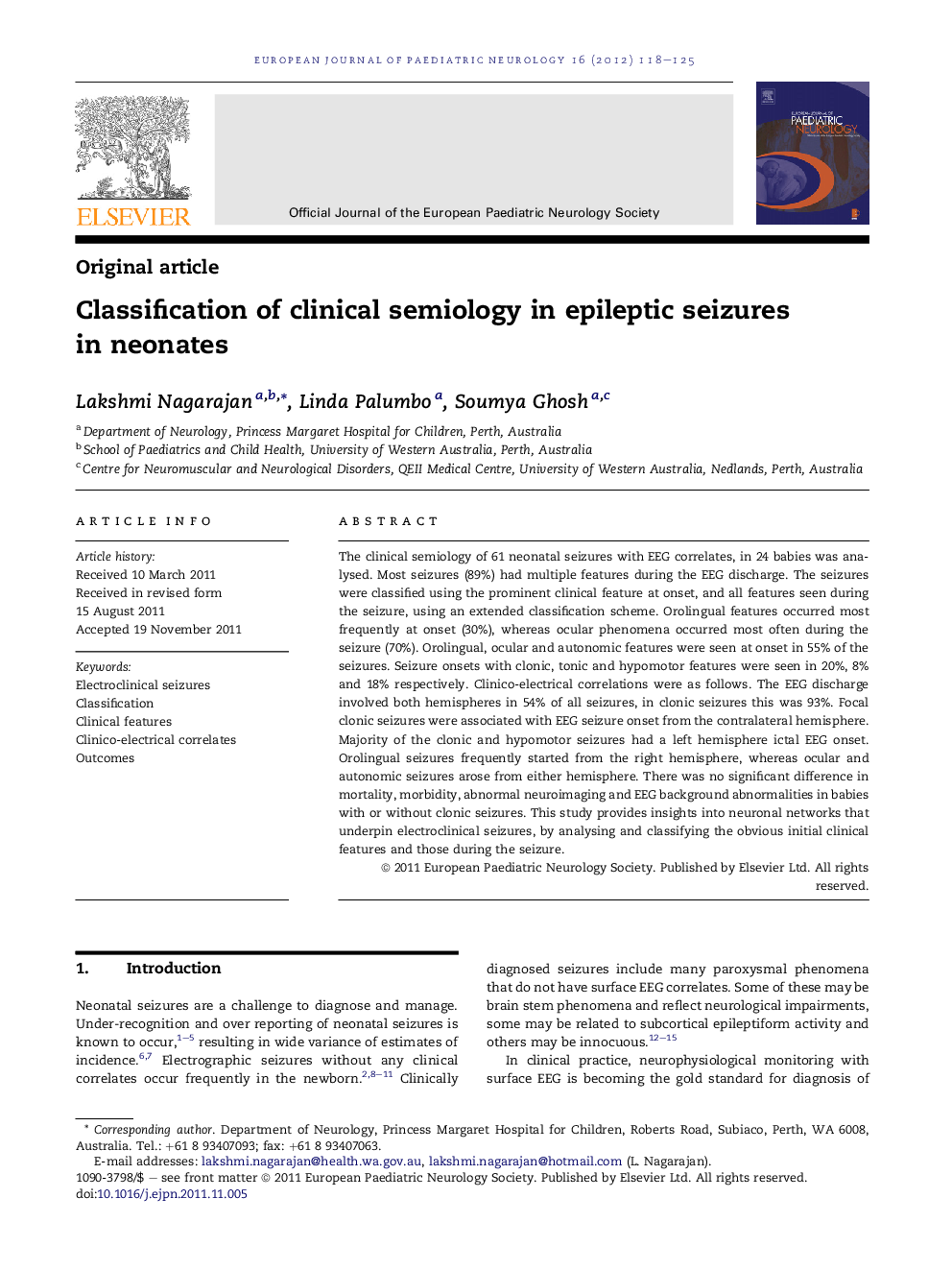| Article ID | Journal | Published Year | Pages | File Type |
|---|---|---|---|---|
| 3053990 | European Journal of Paediatric Neurology | 2012 | 8 Pages |
The clinical semiology of 61 neonatal seizures with EEG correlates, in 24 babies was analysed. Most seizures (89%) had multiple features during the EEG discharge. The seizures were classified using the prominent clinical feature at onset, and all features seen during the seizure, using an extended classification scheme. Orolingual features occurred most frequently at onset (30%), whereas ocular phenomena occurred most often during the seizure (70%). Orolingual, ocular and autonomic features were seen at onset in 55% of the seizures. Seizure onsets with clonic, tonic and hypomotor features were seen in 20%, 8% and 18% respectively. Clinico-electrical correlations were as follows. The EEG discharge involved both hemispheres in 54% of all seizures, in clonic seizures this was 93%. Focal clonic seizures were associated with EEG seizure onset from the contralateral hemisphere. Majority of the clonic and hypomotor seizures had a left hemisphere ictal EEG onset. Orolingual seizures frequently started from the right hemisphere, whereas ocular and autonomic seizures arose from either hemisphere. There was no significant difference in mortality, morbidity, abnormal neuroimaging and EEG background abnormalities in babies with or without clonic seizures. This study provides insights into neuronal networks that underpin electroclinical seizures, by analysing and classifying the obvious initial clinical features and those during the seizure.
